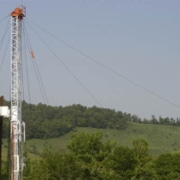Vicki Hollub won a bidding war for Anadarko Petroleum Corp. She is the chief executive of Houston oil company Occidental Petroleum. It was against oil giant Chevron Corp. And everything about the deal is why the center of gravity for the oil universe has moved to Texas.
She has confidence in her company’s ability to operate the Anadarko assets at a lower cost. She believe she can pull together a team to negotiate a $38 billion offer that includes two big partners. It is with the french petroleum company Total SA and Nebraska investment giant Warren Buffett. That is how she Occidental Petroleum took on the Chevron Giant.
Thanks to fracking and horizontal drilling technology developed here in North Texas and applied to the Permian Basin, Texas has become a major oil producer and the U.S. has become an oil exporter.
Houston oil executives no longer have to look to the furthest reaches of the world to boost production; a short flight to Midland brings them to one of the richest boom regions on the globe. Nobody has to negotiate with a Saudi or a Russian for access; in West Texas, the fiercest barriers to drilling are money, tumbleweeds, and, in the case of Chevron, Hollub.
Read full article here
Source: Dallasnews.com
If you have further questions related to how Occidental Petroleum took on Chevron, reach out to us here.




